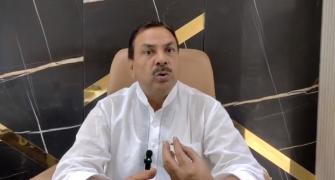Dr Shingo is also credited with creating and formalising Zero Quality Control (poka-yoke techniques to correct possible defects + source inspection to prevent defects = zero quality control).
He also contributed to the Toyota Production System and developed the SMED (Single Minute Exchange of Dyes) and the Just in Time (JIT) concepts.
Poka Yoke is Japanese for mistake-proofing: yokeru is "to avoid", while poka means "inadvertent errors". Poka Yoke devices thus enable avoiding inadvertent errors through behaviour-shaping constraints.
They are a way of preventing errors by placing limits on how an operation can be performed in order to force its correct completion.
People cannot function like machines, with the same result every time. A small distraction can lead to work going wrong. It is not necessarily the worker's fault, as poorly-designed processes that require a great deal of attention can contribute severely to problems.
The basic principles of Poka Yoke, therefore, advocate designing or developing tools, techniques and processes such that it is impossible or very difficult for people to make mistakes.
Poka Yoke is based on the premise that everyone must work together to achieve zero defects. It assumes that the quality of products starts from product design and must be built into the manufacturing process.
Traditional engineering processes are designed to increase the efficiency of an operation by enabling people and machines to work faster. Poka Yoke doesn't violate or negate good engineering practices. Instead, it expands on those practices to include ways to help people and machines do the job right as well as quickly. Error proofing must be implemented to prevent human errors.
In a weld shop at Rojee Tasha Stampings, during the welding of a bracket, it was observed that the nut plate was welded in the reverse direction.
This problem was highlighted by a customer complaint. A fixture was then designed with fixed locations, thus avoiding reverse/opposite side bracket welding. While this was a small improvement, it led to error proofing, saving time and reduction in customer complaints.
Poka Yoke relies on source inspection, detecting defects before they affect the production line and working to eliminate the cause. Statistical quality inspection will ultimately no longer be required, as there will be no defects to detect - "zero defects".
When a Poka Yoke is designed in a way that it helps the operator recognise the defects before it is about to occur, it is called prevention or prediction type of Poka Yoke. Prevention-based mechanisms sense an abnormality that is about to happen, and then signal the occurrence or halt processing, depending on the severity, frequency or downstream consequences.
In many situations, it is not possible or economically feasible to prevent defects, particularly where the capital cost of the Poka Yoke mechanism far exceeds the cost of prevention.
For these situations, defects are detected early in the process, preventing them from flowing to downstream processes and multiplying the cost of non-conformance. Such Poka Yoke is called detection type Poka Yoke.
Following the Poka Yoke philosophy requires an organisation to build a strong foundation in total quality management. Organisations must learn to place the customer before everything else. They must promote quality ownership at the source, and need to ensure that their people are truly empowered.
They must adopt pre-, self-, and post-inspection at source. Poka Yoke requires real-time feedback and corrective action. All these are the building blocks of an effective Poka Yoke effort. After installation, the functioning of the Poka Yoke must be verified according to the prescribed standard method and predefined frequency using a Daily Poka Yoke check sheet.
Mistakes happen in organisations for many reasons, but almost all of them can be prevented, if people make the effort to identify when problems happen, define root causes, and then take the proper corrective actions.
The objective is to prevent, or at least, detect and weed out defects, as early as possible in the process. The use of simple Poka Yoke mechanisms and other safeguards can also prevent mistakes from becoming catastrophic events.
Dr Surinder Kapur is chairman, CII Mission for Manufacturing Innovation, and chairman and managing director, Sona Koyo Steering Systems.








